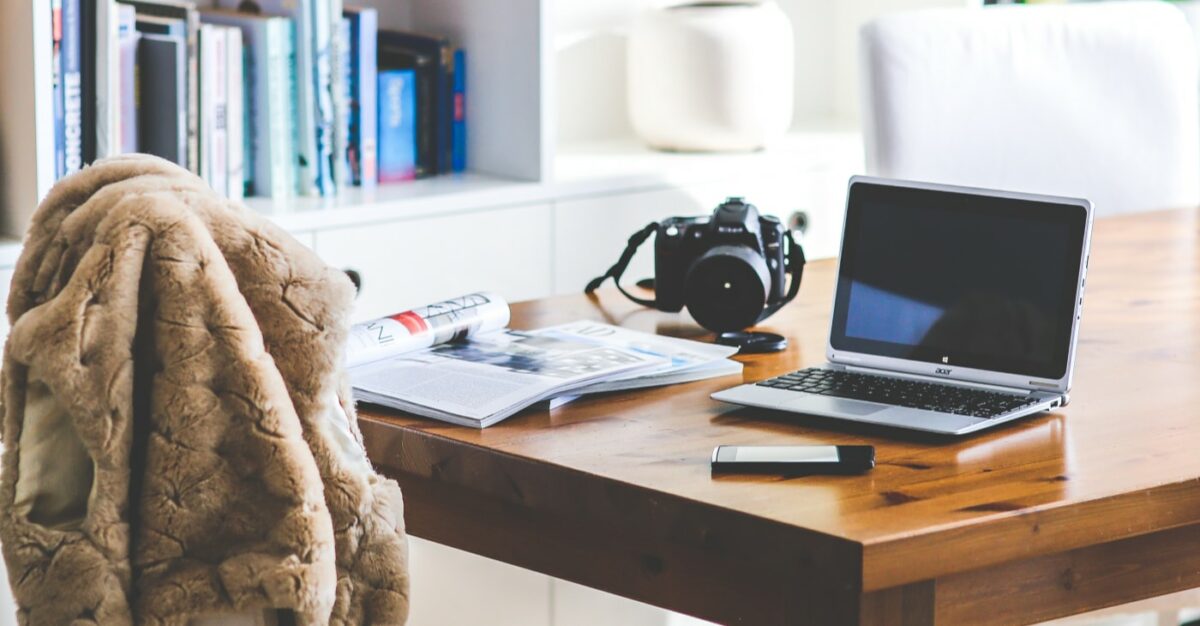We’ve readied a handy how-to guide so that you can maintain your productivity, get your projects done, and still have time to pet your cats or drink some coffee
Due to the coronavirus outbreak, offices around the world are currently participating in the largest natural work-from-home experiment of all time. CareerBuilder is one such office, and I write this from the desk in my room, seated on my usual chair, with a cup of my home-blend tea nearby.
For many of us, this is our first time working from home, and it takes some getting used to. Working from home has its own set of challenges and pitfalls the same as any other office environment. So before you start building your own quirky coronavirus home setup, here is a guide to getting it right and getting things done – wherever you are.
One of the biggest attractions of working from home is the lure of answering emails in your pajamas, with no pesky dress code to make you wear that scratchy tie or bundle up your hair.
But dressing up serves an important purpose in getting us to feel that the workday has truly begun. It makes clear the end of relaxation time and the beginning of work time. In my case, I’m “on the clock” the moment I finish changing my clothes and sit down at my desk. If I start reading my emails and checking my daily schedule in my pajamas, I would probably just browse cat videos on work time.
Unless you have an important video call, there’s no need to wear full professional attire. Just changing into a t-shirt and jeans (and out of those jammies!) will trigger the mental shift into “work mode”. Being properly dressed also increases motivation to leave the house, which definitely helps with the monotony.
The reverse is also true at the end of the day. Changing out of your work clothes will bookend your remote “office activity” and prevent you from working long hours into the night, forgoing sleep and meals.
Step 2: Clear out Distractions/Set Boundaries
Settle in to working from home by preparing an office space at home. It should be free of clutter, contain only your work materials, and organised as similarly to your office setup as you can make it. While you can have essentials like a playpen close at hand for the kids, it should be obvious that this is the place where work gets done – and as you work at it (literally), working there will become a habit.
Similarly, it’s important to set boundaries in the intangible way as well. Inform your kids and partner when you will be available and when you will be concentrating on your tasks. Some executives take this even further by disconnecting the doorbell or turning off the phone, so that they won’t be distracted by the small sounds of life. And while your pet may not listen to a verbal explanation, a fence or bed may come in handy in keeping it out when it wants in.
These measures will help you mentally separate “work” from “home” and create a kind of virtually bounded office space in your mind. That way, when you enter that space, you will feel motivated to start working and keep working.
Step 3: Keep to Your Routine
Do you have a regular office routine? Try to emulate that as much as possible.
For example, your day may begin with clocking into the office, getting a cup of coffee, and chatting with your colleagues at the pantry before booting up the computer and going through emails. You may wish to substitute different homebound activities for each of those steps. Thus, you could begin with your cup of coffee, put up a “do not disturb” sign, send some messages on your Whatsapp groups (keeping each other updated about the Covid situation should come in especially handy), then do the usual.
Keeping to your work routine will help you remain steady and focused on your job. When our office was given the work from home notice, our MD emphasised that there should be no disruption to our tasks and we were to proceed as though we were working in the office as usual. Keeping to established work routines greatly helped with this endeavor.> delete the space between “no” and “disruption”
Step 4: Make your Social Contact Quota – pick up your phone!
One big loss you will feel when you start working from home is the lack of social interaction. At the office, you can chat with colleagues and greet others in passing at the lift or washroom. Should you need help with something, a supervisor is only a desk away, or you can call out to a well-informed colleague for the information and get a reply within a second. Research has found that people working together in the same room tend to solve problems more quickly than remote collaborators, and that team cohesion suffers in remote work arrangements.
To combat social isolation and get the work juices flowing, put aside break times where you interact with friends and colleagues via a chatting app, or post to Facebook and check out the responses. Some highly recommend the personal phone call or video conference – seeing a face and hearing a real voice can be vital when you’re feeling alone and left out with just yourself and your workstation.
That said, make sure to schedule these activities as part of your “work day”. Don’t randomly decide to browse Twitter, or you’ll find yourself still browsing Twitter a good three hours later.
Step 5: Keep Healthy – eat well and exercise!
Unless you’re on strict quarantine orders, going outside for some exercise and interaction is a must!
While you may embrace the lack of commute, that commute did guarantee that you left the house. Now that it’s gone, it’s up to you to get yourself out and about in different ways. Go for a bike ride or meet some friends for lunch – fresh air and new perspectives have been shown to help undo mental blocks and refresh your outlook on your work tasks. Remember to schedule these similarly to your “breaks” to ensure you don’t spend too much time outside, forgetting your work tasks.
If you really can’t leave, you may wish to try playing some ambient sounds on the stereo or just going to the balcony for a few deep breaths.
With the coronavirus situation set to worsen, more and more executives will find themselves working remotely from a desktop in their living room. As we get through this together, we can do so without losing productivity or sleep as long as we work carefully and purposefully – just like at the office.





